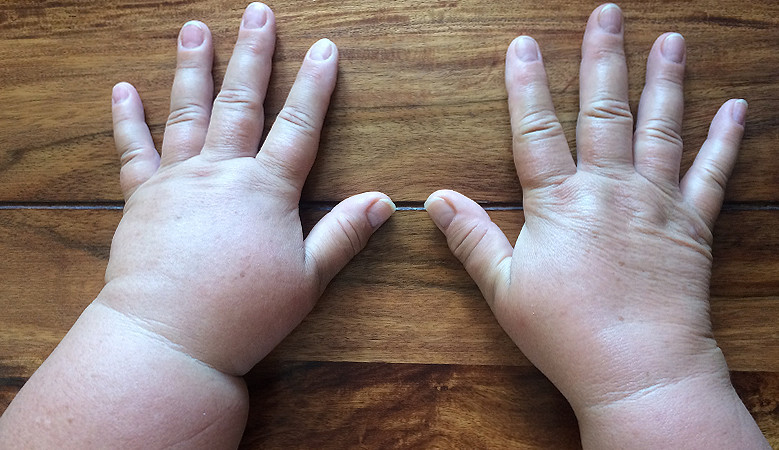Lymphedema – disease of the lymphatic system
Lymphedema, also known as lymphoedema, is a chronic condition that can significantly affect your quality of life. In your body, lymphatic vessels are responsible for transporting fluid and dissolved waste products outside the blood vessels. If this system is damaged or malfunctions somewhere, then – much like a clogged pipe – fluid accumulates in the tissues. This accumulation causes the symptoms we call lymphedema.
Lymphedema, also referred to as lymphoedema, is a chronic condition that can significantly impact your quality of life. In your body, the lymphatic vessels are responsible for removing fluid and dissolved waste products from outside the blood vessels. When this system is damaged or impaired, fluid builds up in the tissues much like water in a blocked pipe. This accumulation causes the uncomfortable symptoms known as lymphedema.
The function and role of the lymphatic system
Every day, several liters of fluid flow through your lymphatic system. This is not just simple water – lymph fluid contains proteins, dead cells, fats, and various waste products. You can think of it as your body's own cleaning system. If this system doesn’t function properly, these substances cannot be cleared from the tissues, causing swelling in various areas.
Primary lymphedema – when the problem is congenital
Primary or congenital lymphedema results from a birth defect. This means that from birth, your lymph vessels or lymph nodes did not form correctly or do not function properly. This type is relatively rare – imagine it occurs in only one person out of a small town. Interestingly, it appears three times more often in women than in men, although the exact reason for this is still unknown to science.
Primary lymphedema may appear at birth, but can also first manifest later in adolescence or even adulthood. If it develops at a young age, it is called the praecox form, while if it appears after age 35, it is referred to as the tarda form. Symptoms usually gradually worsen over the years.
Secondary lymphedema – when external factors cause the problem
Secondary or acquired lymphedema is much more common. In this case, your previously healthy lymphatic system becomes damaged due to some external factor. The most common cause is surgery or cancer treatment or radiation therapy. When doctors remove lymph nodes or radiation damages them, lymph fluid drainage becomes obstructed.
However, not only cancer treatments can cause lymphedema. Accidents, injuries, and various infections may also be responsible. Erysipelas is a bacterial skin infection which often leads to the development of lymphedema.
Additionally, chronic venous diseases such as varicose veins or deep vein thrombosis also increase the risk.
Lifestyle factors should not be overlooked either. A sedentary lifestyle and obesity significantly increase the chance of developing lymphedema. If you lie or sit for extended periods or live with significant excess weight, your lymphatic system struggles to perform its role effectively.
Gradual development and stages of lymphedema
The disease does not develop overnight – it is a gradual process. In the beginning, you might not even notice any changes. This is called the latent phase, when your lymphatic system is already damaged but doesn’t cause visible symptoms yet.
The first visible sign is usually a soft, doughy swelling that leaves a dent when you press it with your finger. At this early stage, the swelling might subside on its own if you rest or elevate the affected limb.
As the disease advances, the swelling becomes persistent and the tissues start to harden. Rest or elevation no longer completely relieve it. Without proper treatment, the condition may worsen. In the third stage, the swelling becomes so firm that it no longer retains finger pressure indentations, and the skin thickens, taking on an elephant-like texture.
The most severe form is called elephantiasis, where the limb swells so much and becomes deformed that it significantly limits everyday movement. You definitely want to avoid this, so it is important to recognize symptoms early and start treatment.
Try to maintain a positive attitude. Although lymphedema cannot be cured, it can be well managed with proper treatment and lifestyle. The earlier you begin treatment and the more consistently you adhere to recommendations, the better results you can achieve. Remember, you are not alone – seek out fellow sufferers, join support groups where you can share experiences and receive advice from others in similar situations.
Living with lymphedema can be challenging, but with the right knowledge, attention, and professional support, you can live a full, active life. The key is early detection, regular treatment, and maintaining a healthy lifestyle. Following these guidelines can significantly reduce the risk of complications and improve your quality of life.
Treatment for lymphedema takes place 5% in clinics and 95% at the patient's home. In this article, Dr. Zsolt Zátrok presents the options for home treatment, along with advice on lifestyle, nutrition, and exercise.
Lymphedema treatment at home
Home lymphedema treatment: We review what home compression therapy treatments are available to you, such as mechanical compression therapy units.
Try to maintain a positive attitude towards your situation. Although lymphedema is not curable, it can be managed well with proper treatment and lifestyle changes. The sooner you start treatment and the more consistently you follow the guidelines, the better your outcomes will be. Remember, you are not alone – find peers and join support groups where you can exchange experiences and get advice from others in similar situations.
Living with lymphedema can be challenging, but with appropriate knowledge, care, and professional help, you can live a full, active life. The key is early recognition, regular treatment, and maintaining a healthy lifestyle. Following these guidelines significantly lowers the risk of complications and improves your quality of life.



